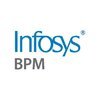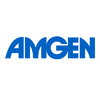System Associate
20+ System Associate Interview Questions and Answers

Asked in Infosys

Q. What is a Primary Key? What are the features of the C language? What is the use of printf() and scanf() functions
A primary key is a unique identifier for a record in a database table.
It ensures that each record is unique and can be easily accessed.
It is used to establish relationships between tables.
It cannot be null or have duplicate values.
Examples include social security numbers, email addresses, and employee IDs.

Asked in Infosys

Q. What are object-oriented programming concepts?
Object oriented programming concepts are principles used in programming to organize code and data around objects.
Encapsulation: Bundling data and methods that operate on the data into a single unit (object).
Inheritance: Allowing a new class to inherit properties and methods from an existing class.
Polymorphism: The ability for objects of different classes to respond to the same message in different ways.
Abstraction: Hiding complex implementation details and showing only the ne...read more

Asked in TCS

Q. What is the difference between C and C++?
C is a procedural programming language while C++ is a multi-paradigm programming language with object-oriented features.
C is a procedural programming language, while C++ supports both procedural and object-oriented programming.
C does not have classes and objects, while C++ supports classes and objects.
C does not have features like inheritance and polymorphism, which are supported in C++.
C is a subset of C++, meaning that C++ includes all of C's features and adds new features ...read more

Asked in Infosys

Q. What are the key concepts of Object-Oriented Programming (OOP)?
OOP is a programming paradigm based on objects, encapsulating data and behavior, promoting code reusability and modularity.
Encapsulation: Bundling data and methods that operate on the data within one unit (e.g., a class).
Inheritance: Mechanism to create a new class based on an existing class, inheriting its properties (e.g., a 'Dog' class inheriting from an 'Animal' class).
Polymorphism: Ability to present the same interface for different underlying data types (e.g., a functio...read more

Asked in Infosys

Q. What is DBMS? What is the difference between SQL and MySQL?
DBMS is a software that manages databases. SQL is a language used to manage relational databases, while MySQL is a specific relational database management system.
DBMS stands for Database Management System
It is a software that manages databases
SQL is a language used to manage relational databases
MySQL is a specific relational database management system
SQL is used to communicate with MySQL to manage data
Other examples of DBMS include Oracle, Microsoft SQL Server, and PostgreSQL

Asked in Infosys BPM

Q. Feathers of java, and difference between java and c?
Java has feathers like platform independence, garbage collection, and strong typing. C is a low-level language with manual memory management.
Java is platform-independent, meaning it can run on any platform without recompiling the code.
Java has automatic garbage collection, which means the programmer doesn't have to manually free up memory.
Java is strongly typed, which means the type of a variable is checked at compile-time.
C is a low-level language, which means it is closer t...read more
System Associate Jobs




Asked in Infosys

Q. what is pointer? can you explain
A pointer is a variable that stores the memory address of another variable.
Pointers are used to access and manipulate memory locations directly.
They are often used in programming languages like C and C++.
Example: int *ptr; // declaring a pointer variable

Asked in Infosys

Q. What are the differences between the C and C++ languages?
C++ is an extension of C language with object-oriented programming features.
C++ supports classes and objects while C does not.
C++ has better support for polymorphism and inheritance.
C++ has a standard template library (STL) while C does not.
C++ allows function overloading while C does not.
C++ has exception handling while C does not.
Share interview questions and help millions of jobseekers 🌟


Asked in Infosys

Q. Applied mechanics and strength of material
Applied mechanics and strength of material
Applied mechanics deals with the study of forces and their effects on bodies in motion or at rest
Strength of materials deals with the study of the behavior of solid objects subject to stresses and strains
Both are important in designing and analyzing structures and machines

Asked in Infosys

Q. What are the subtypes of SQL?
The subtypes of SQL include MySQL, PostgreSQL, SQLite, Oracle, SQL Server, and more.
MySQL
PostgreSQL
SQLite
Oracle
SQL Server

Asked in Infosys

Q. Explain the difference between SQL left and right joins.
SQL left and right joins are used to combine rows from two or more tables based on a related column between them.
Left join returns all rows from the left table and the matched rows from the right table.
Right join returns all rows from the right table and the matched rows from the left table.
Use LEFT JOIN or RIGHT JOIN keywords in SQL queries to perform left and right joins.

Asked in Infosys

Q. What is SDLC, in brief?
SDLC (Software Development Life Cycle) is a structured process for developing software through various stages from planning to maintenance.
1. Requirements Gathering: Identify what the software needs to do. Example: User interviews to gather feature requests.
2. Design: Create architecture and design specifications. Example: UML diagrams to outline system structure.
3. Implementation: Write and compile the code. Example: Developers coding in Java or Python.
4. Testing: Validate t...read more

Asked in Intuit

Q. What are the differences between C, C++, and Java?
C is a procedural language, C++ is an object-oriented language, and Java is a class-based object-oriented language.
C is used for system programming and low-level programming.
C++ is used for developing software, games, and operating systems.
Java is used for developing web applications, mobile applications, and enterprise software.
C++ supports both procedural and object-oriented programming.
Java is platform-independent and uses a virtual machine to run code.
C++ is faster than J...read more

Asked in TCS

Q. What is inheritance?
Inheritance is a fundamental concept in object-oriented programming that allows a class to inherit properties and methods from another class.
Inheritance promotes code reusability by allowing new classes to use existing class functionality.
There are different types of inheritance: single, multiple, multilevel, hierarchical, and hybrid.
Example of single inheritance: Class 'Dog' inherits from class 'Animal'.
Example of multiple inheritance: Class 'FlyingFish' inherits from both '...read more

Asked in Infosys

Q. What is method overloading?
Method overloading is when multiple methods in a class have the same name but different parameters.
Allows a class to have multiple methods with the same name but different parameters
Parameters can differ in number, type, or order
Example: void print(int a), void print(int a, int b)

Asked in Cognizant

Q. Explain the OOP concepts.
Oops concepts are the principles of Object-Oriented Programming that help in creating modular and reusable code.
Encapsulation: Binding data and functions together in a single unit called class.
Inheritance: Acquiring properties of one class by another class.
Polymorphism: Ability of an object to take many forms.
Abstraction: Hiding the implementation details and showing only the necessary information to the user.

Asked in Infosys

Q. What is your experience with operating systems?
An operating system (OS) manages computer hardware and software, providing services for computer programs.
An OS acts as an intermediary between users and the computer hardware.
Examples of operating systems include Windows, macOS, Linux, and Android.
The OS manages system resources like CPU, memory, and storage.
It provides a user interface, which can be command-line or graphical.
Operating systems handle file management, security, and process management.

Asked in Nofinite

Q. What is JavaScript?
JavaScript is a high-level, interpreted programming language used for creating interactive websites.
JavaScript is commonly used for client-side web development.
It can be used to create dynamic and interactive elements on web pages.
JavaScript can also be used for server-side development with Node.js.
It is a versatile language that can be used for creating web applications, games, and more.

Asked in Infosys

Q. What is OOPS in C++?
Oops in C stands for Object-Oriented Programming concepts like classes, objects, inheritance, polymorphism, and encapsulation.
Oops in C refers to the implementation of object-oriented programming concepts such as classes, objects, inheritance, polymorphism, and encapsulation.
It allows for the creation of reusable code through the use of classes and objects.
Inheritance enables the creation of new classes based on existing classes, promoting code reusability.
Polymorphism allows...read more

Asked in Infosys

Q. What are the layers of the network model?
Network layers are a set of protocols that define the communication between devices in a network.
There are seven network layers in the OSI model
Each layer has a specific function and interacts with adjacent layers
Examples include physical layer, data link layer, network layer, transport layer, session layer, presentation layer, and application layer
Asked in VOW ERP Solutions

Q. Tell me about the concepts of OOPS.
OOPs concepts are the fundamental principles of object-oriented programming.
Encapsulation - binding data and functions together
Inheritance - creating new classes from existing ones
Polymorphism - ability of objects to take on many forms
Abstraction - hiding implementation details from users
Example: A car is an object that encapsulates data like speed and functions like accelerate and brake
Example: A child class can inherit properties and methods from a parent class
Example: A sh...read more
Asked in Praeclarum Tech

Q. What is Node.js?
Node.js is a runtime environment that allows you to run JavaScript on the server side.
Node.js is built on Chrome's V8 JavaScript engine.
It uses an event-driven, non-blocking I/O model.
Node.js is commonly used for building server-side applications.
It allows developers to use JavaScript for both client-side and server-side programming.
Node.js has a large ecosystem of open-source libraries and frameworks.

Asked in TCS

Q. What are the differences between C and C++?
C is a procedural programming language while C++ is an object-oriented programming language.
C is a subset of C++
C does not support classes and objects, while C++ does
C is a procedural language, while C++ supports both procedural and object-oriented programming
C++ has features like function overloading, templates, and exception handling which are not present in C
C++ allows the use of namespaces for organizing code, which is not available in C

Asked in TCS

Q. Explain the concepts of OOP.
OOP (Object-Oriented Programming) is a programming paradigm based on objects, encapsulation, inheritance, and polymorphism.
Encapsulation: Bundling data and methods that operate on the data within one unit (e.g., a class).
Inheritance: Mechanism where a new class derives properties and behavior from an existing class (e.g., a 'Dog' class inheriting from an 'Animal' class).
Polymorphism: Ability to present the same interface for different data types (e.g., a function that can tak...read more

Asked in Infosys

Q. Define the concept of OOPs.
OOPs (Object-Oriented Programming) is a programming paradigm based on the concept of objects, which can contain data and code.
OOPs focuses on creating objects that interact with each other to solve problems.
It involves concepts like classes, objects, inheritance, polymorphism, and encapsulation.
For example, a car class can have objects like BMW, Audi, and Mercedes, each with their own properties and methods.

Asked in TCS

Q. Explain the principles of OOPS.
OOPS stands for Object-Oriented Programming System. It is a programming paradigm based on the concept of objects.
OOPS focuses on creating objects that contain data and methods to manipulate that data.
It allows for encapsulation, inheritance, and polymorphism.
Encapsulation refers to the bundling of data with the methods that operate on that data within a single unit.
Inheritance allows classes to inherit attributes and methods from other classes.
Polymorphism allows objects to b...read more
Interview Questions of Similar Designations
Interview Experiences of Popular Companies





Top Interview Questions for System Associate Related Skills

Calculate your in-hand salary
Confused about how your in-hand salary is calculated? Enter your annual salary (CTC) and get your in-hand salary


Reviews
Interviews
Salaries
Users










